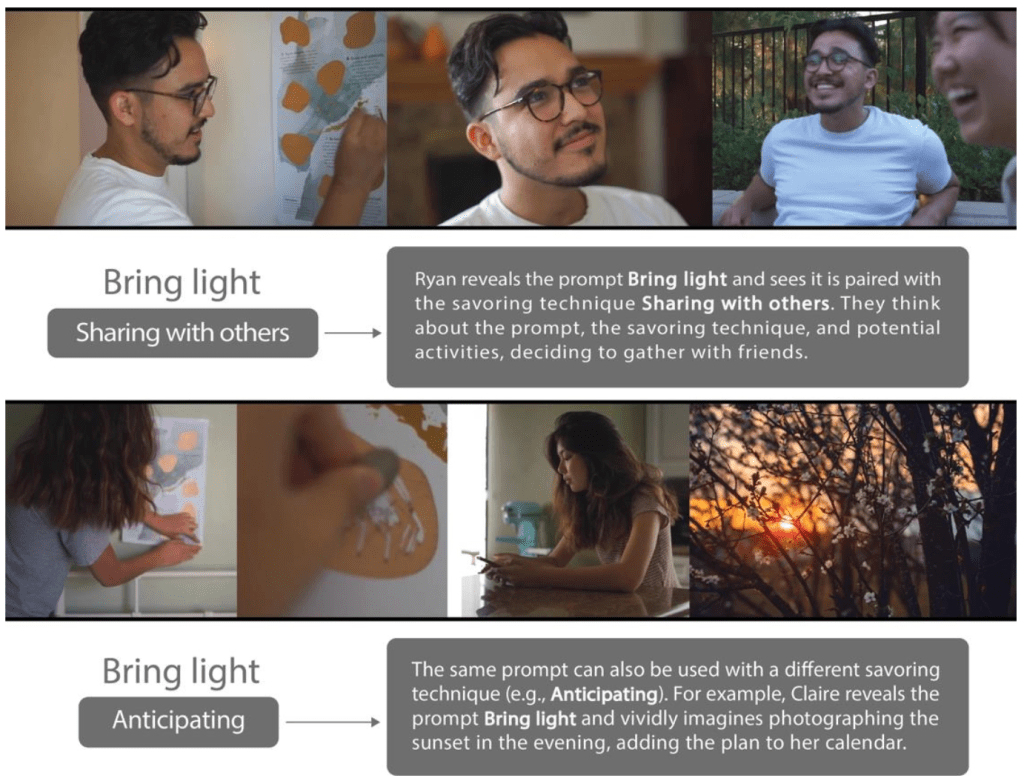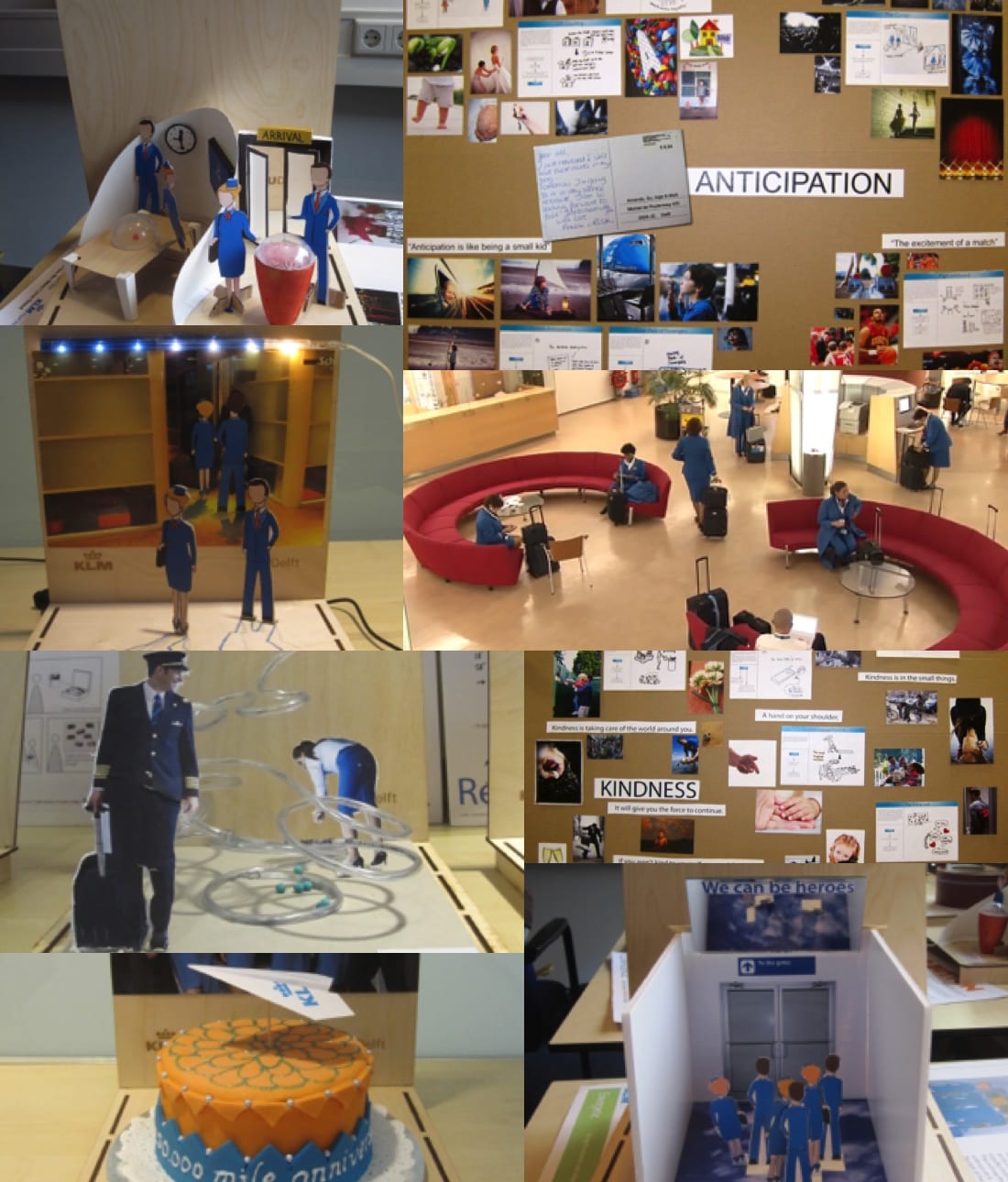Click the image to enlarge.
Interaction scenarios for Revealing Moments in which two individuals self-select different positive activities in response to the same ambiguous prompt (i.e., “Bring light”).
Publication
- Faulk, J., & Yoon, J. (2023). Does practicing a diversity of savoring techniques help enhance happiness? A randomized-controlled trial of design-mediated well-being, Journal of Design Research. (In press – Downloadable upon request)
- Faulk, J.D., Oluwadairo, O., & Yoon, J. (2022). Secret dance and bring light: Enhancing user autonomy through directional ambiguity in designing positive emotion regulation interventions. Design Research Society (DRS), Bilbao, ES. Download
When we look forward to enjoyable events or share positive experiences with others we can prolong and amplify our positive emotions. These and other savoring techniques can increase our subjective well-being. Yet, it remains unknown whether practicing a variety of savoring techniques adds its own happiness-enhancing effect. In this 1X3 randomized-controlled trial, 71 participants used a novel, interactive poster to facilitate high vs. low savoring diversity over eight days, or they journaled in the control condition. Unlike other positive psychology interventions, the poster was designed to inspire users to self-select their own happiness-enhancing activities. Regression analyses showed that while cognitive well-being increased in the high diversity condition, emotional well-being did not. These results suggested that assigning savoring diversity may have modestly contributed to users’ cognitive well-being. Written responses further pointed to the poster’s potential effectiveness in promoting positive experiences. Implications for design practice and directions for future research are discussed.

A diagram that depicts how practicing diverse savoring techniques may increase participants’ well-being.



